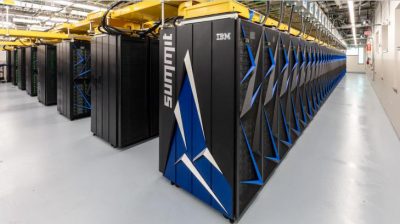The biggest challenges in science require supercomputers of unprecedented capability. That’s why the U.S. Department of Energy’s Oak Ridge National Laboratory (ORNL) recently launched Summit, a system that will provide scientists with incredible computing power.

With a peak performance of 200,000 trillion calculations per second—or 200 petaflops, Summit will be eight times more powerful than ORNL’s previous top-ranked system, Titan. For certain scientific applications, such as the modeling work performed by many ASR-funded scientists, Summit brings more than three billion billion mixed precision calculations per second, or 3.3 exaops.
Summit will also provide unprecedented computing power for research in energy, advanced materials and artificial intelligence (AI), among other domains, enabling scientific discoveries that were previously impractical or impossible.
“Today’s launch of the Summit supercomputer demonstrates the strength of American leadership in scientific innovation and technology development. It’s going to have a profound impact in energy research, scientific discovery, economic competitiveness and national security,” said Secretary of Energy Rick Perry. “I am truly excited by the potential of Summit, as it moves the nation one step closer to the goal of delivering an exascale supercomputing system by 2021. Summit will empower scientists to address a wide range of new challenges, accelerate discovery, spur innovation and above all, benefit the American people.”
The IBM AC922 system consists of 4,608 compute servers, each containing two 22-core IBM Power9 processors and six NVIDIA Tesla V100 graphics processing unit accelerators, interconnected with dual-rail Mellanox EDR 100Gb/s InfiniBand. Summit also possesses more than 10 petabytes of memory paired with fast, high-bandwidth pathways for efficient data movement. The combination of cutting-edge hardware and robust data subsystems marks an evolution of the hybrid CPU–GPU architecture successfully pioneered by the 27-petaflops Titan in 2012.
Read the full story.
# # #
This work was supported by the U.S. Department of Energy’s Office of Science, Office of Biological and Environmental Research as part of the Atmospheric System Research Program.
Oak Ridge Introduces Summit, America’s Top Supercomputer for Science
Published: 27 August 2018

